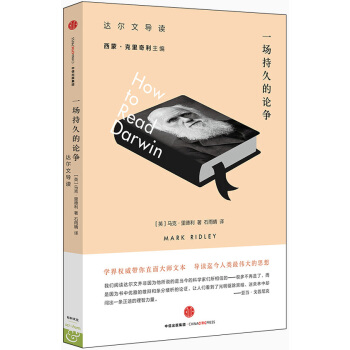

具体描述
编辑推荐
在众多的AP科目中,AP环境科学在我国仍是小众学科,选修人数不多,有能力开设该专业的国际学校也不多,但这一学科在美国却异常火爆。对比发现,其原因主要有,一是AP环境科学学科综合性强、贴近生活,应试难度不大;二是环境问题已经成为全球范围的热点问题,美国是十分注重知识实用性的国家,因此学习AP环境科学是解决学生知识结构性短缺的好方式,类似于我国学生为加强自身素质教育的一种必选;三是环境问题的产生加速了全球环保产业的发展,这方面的就业、创业机会也相应地大大增加,环境类专业也成为美国高中生选择大学专业的热点。AP 环境科学是一门涵盖诸多学科知识的美国大学先修课程,这是它与其他AP 学科很显著的不同点。环境科学包含了地理、生物、化学、环境研究等诸多学科的知识点。通过对相关科学原理、科学概念、科学方法的介绍,这门课程会帮助考生系统了解和分析各种复杂环境问题,评价各类潜在的环境危机,探究解决和预防环境问题的可行性方法。AP 环境科学课会展示出人与自然的大画卷,威力巨大的台风,在开始可能仅仅是一团看似可爱的气体;城市热岛现象造成的高温天气,也可以运用流体力学、气候学和建筑学的城市规划而达到减缓。
内容简介
《AP环境科学》是作者结合AP 环境科学的教学心得,为参加AP 环境科学考试的中国考生而编写。这本中英文备考参考书,可帮助考生系统领会考试纲要,掌握知识要点,顺利通过AP考试。全书共四部分:(一)AP 环境科学知识复习。该部分按照美国大学理事会AP 环境科学考试要求,将考试要点分为七个主题,分别是地球系统和资源、生物系统、种群、土地和水的利用、能源和消耗、污染以及全球变化。(二)AP 环境科学考试。该部分介绍了AP 环境科学考试的基本构成,分专题总结了环境科学考试中会遇到的化学公式、计算题以及问答题,让考生了解考试中的得分点。(三)AP 环境科学实验。该部分巧妙地将知识点和实际应用结合在一起,帮助考生在短时间内有效理解并应用科学原理和概念。(四)AP 环境科学主要词汇。
作者简介
王鲁英,美国大学理事会AP环境科学认证教师,多年从事双语国际教育教学,其学生在AP、SATⅡ专业考试中屡获高分。
目录
Part 1 AP Environmental Science Reviews 第一部分 AP 环境科学知识复习
Chapter 1 Earth Systems and Resources第一章 地球系统和资源
Chapter 2 The Living World 第二章 生物系统
Chapter 3 Population 第三章 种群
Chapter 4 Land and Water Use第四章 土地和水的利用
Chapter 5 Energy Resources and Consumption第五章 能源和消耗
Chapter 6 Pollution 第六章 污染
Chapter 7 Global Change 第七章 全球变化
Part 2 AP Environmental Science Exam第二部分 AP 环境科学考试
Chapter 1 Introduction to the AP Environmental Science Exam第一章 AP 环境科学考试介绍
Chapter 2 Chemical Formulas in AP Environmental Science 第二章 AP 环境科学中的化学公式
Chapter 3 AP Environmental ScienceMathematics第三章 AP 环境科学中的计算题
Chapter 4 Free Response Questions in the AP Environmental Science Exam第四章 AP 环境科学考试中的问答题
Part 3 AP Environmental Science Lab Activities第三部分 AP 环境科学实验
Lab 1 Ozone Testing Lab 实验 1 臭氧测试实验
Lab 2 Oh Deer实验 2 种群与生态实验
Lab 3 Habitat Loss Lab实验 3 栖息地的流失实验
Lab 4 Species Diversity Lab实验 4 物种多样性实验
Lab 5 Endangered Species Lab实验 5 濒临灭绝的物种实验
Lab 6 Wanted实验 6 分析实验
Lab 7 Dilution Lab实验 7 稀释实验
Lab 8 Ecocolumn Lab实验 8 生态柱实验
Lab 9 A Quandary in Ponder实验 9 庞德城的困境
Lab 10 Tagging Lab实验 10 标记实验
Lab 11 Cover It Up实验 11 课本封面实验
Lab 12 Soil Salinization Lab实验 12 土壤盐碱化实验
Lab 13 Exponential Growth Worksheet实验 13 指数增长计算
Lab 14 Food Webbing实验 14 食物网
Lab 15 Cookie Mining实验 15 开采实验
Lab 16 Electric Power From Sun and Wind实验 16 风力发电与太阳能发电
Lab 17 Energy Use Inventory实验 17 能源利用库存
Lab 18 Airborne Particulate Lab实验 18 空气颗粒物实验
Lab 19 Planting Density Lab 实验 19 种植密度实验
Lab 20 Risk Lab 实验 20 风险分析实验
Lab 21 Soil Texture Lab实验 21 土壤成分测试
Lab 22 Water Use实验 22 水资源的利用
Lab 23 The AP Environmental Science Debates实验 23 AP 环境科学讨论
Lab 24 Happy Fishing实验 24 快乐捕鱼
Part 4 AP Environmental Science Key Words第四部分 AP 环境科学主要词汇
精彩书摘
Chapter 2 The Living World第二章 生物系统
本章的生物概念相对重要,在理解了概念后,才能将其很好地应用。这些生物概念包括:
生物种群(biological populations):在同一生活空间,相同物种 (same species) 个体的集群。
群落(communities):在同一生活空间,不同物种(different species) 个体的集群。
生态位(ecological niches): 一个物种在所处环境中的生态作用(environmental function)。
物种间的相互作用(interactions among species):物种之间的相互关系有很多种,例如寄生、腐生、竞争、共生等。
关键种(keystone species):对保持生态群落的结构起着重要作用的物种。
物种多样性(species diversity):在一定时间和区域内所有生物物种及其遗传变异和生态系统复杂性的总称。生物多样性包括了基因多样性、物种多样性、生态系统多样性等。
边际效应(edge effects)
主要陆生和水生生物群系(major terrestrial and aquatic biomes)
1 Ecosystem 生态系统(图1—2—1)
1.1. Community.Interactions 群落间的相互作用
两个不同的物种常常会竞争同一个生态位,这种竞争关系抑制种群的增长,从而出现了以下5 种物种间的相互作用。
It is not uncommon for the niches of two species to overlap. The overlap increases competition and can therefore limit population growth. This produces five main types of interactions among species.
1.1.1 Interspecific Competition 种间斗争
种间斗争指两个或两个以上物种竞争相同的生存环境。
Interspecific competition refers to the competition between two or more species for the same limited resources in the environment such as food, nutrients, space, sunlight.
种间斗争导致的结果有三种: extinction, resources partitioning and character displacement. In nature, there are two related outcomes, besides extinction, if two species inhabit the same niche and therefore compete for resources. One of the species will evolve through natural selection to exploit different resources. This is called resources partitioning. Another possibility is called character displacement, which occurred on the Galapagos Islands. Mammalian carnivores, Galapagos finches, Anolis lizards on island are examples of character displacement.
1.1.2 Predation 捕食
一个食肉动物以其他的生物为食。
A predator feeds on all or part of another organism known as its prey.
捕食又包括以下几种形式:
a. pursuit and ambush 追求和伏击
b. mimicry 模仿
c. camouflage 伪装
d. chemical warfare 化学战
植物通过本身的结构特点,比如刺毛,或者通过排放毒素来抵抗一些动物的捕获。
Plants have evolved spines and thorns and chemical poisons such as strychnine, mescaline, morphine, and nicotine to fend off attack by animals.
而有些动物采取隐藏等主动防御措施来抵抗其他动物的捕获。也有一些动物利用拟态、警戒色、保卫色等方式来保护自己。
Animals have evolved active defenses such as hiding, fleeing, or defending themselves. These, however, can be very costly in terms of energy. Animals have also evolved passive defenses such as cryptic coloration or camouflage that make the prey difficult to spot. Examples:
警戒色Aposematic coloration is very bright, often red or orange, coloration of poisonous animals as a warning that possible predators should avoid them.
警戒拟态(又叫贝氏拟态)Batesian mimicry is copycat coloration where one harmless animal mimics the coloration of one that is poisonous. One example is the viceroy
butterfly which is harmless but looks very similar to the monarch butterfly, which stores poisons in its body from the milkweed plant.
缪勒拟态In Mullerian mimicry, two or more poisonous species, such as the cuckoo bee and the yellow jacket, resemble each other and gain an advantage from their combined number. Predators learn more quickly to avoid and prey with that appearance.
1.1.3 Parasitism 寄生
一个生物寄生在另一个宿主生物中,从宿主生物中获取能量。
One organism (parasite) gains energy by living on or inside a host organism. A tapeworm in the human intestine is an example.
1.1.4 Mutualism 互利共生
两种生物相互作用,彼此有利。
Two organisms interact in a manner that is beneficial to both in some way. An example is the bacteria that live in the human intestine and produce vitamins.
互利共生又包括:
a. nutritional mutualism
b. gut inhabitant mutualism
1.1.5 Commensalism 共栖
两种生物中的相互作用仅有利于一方。
This interaction benefits one species but has little or no impact on the other. Barnacles that attach themselves to the underside of a whale benefit by gaining access to a variety of food sources as the whale swims into different areas. The whale is unaware of the barnacles.
……
前言/序言
用户评价
这本书的内容让我对全球环境的现状有了前所未有的深刻认识。它不仅仅是一本教科书,更像是一次对地球的全面体检报告。我被书中关于气候变化的数据和预测深深震撼,也对生物多样性锐减的严峻形势感到忧虑。但同时,它也并没有一味地渲染绝望,而是积极地介绍了各种可持续发展的理念和技术,比如可再生能源的应用、废物管理的新方法、以及生态修复的成功案例。这让我看到了希望,也激发了我积极参与到环境保护中的动力。我喜欢作者在阐述科学原理时,总是能巧妙地将其与现实世界中的具体问题联系起来,比如在讲解土壤侵蚀时,它会引用阿根廷大草原的例子,生动地说明不当的耕作方式可能带来的灾难性后果。书中的案例分析非常详实,提供了丰富的思考维度。对我而言,这本书最大的价值在于,它不仅传授了知识,更重要的是培养了我对环境问题的批判性思维能力。我学会了如何从科学的角度去审视信息,辨别真伪,并对各种解决方案进行评估。
评分这本书的叙述方式非常吸引人,它就像一位经验丰富的向导,带着我穿越各种复杂的地质构造,探索繁茂的生物圈,并深入了解我们赖以生存的地球所面临的挑战。我特别欣赏作者在讲解科学概念时,能够运用恰当的比喻和生动的语言,让原本晦涩难懂的理论变得妙趣横生。例如,在解释“生物地球化学循环”时,作者将其比喻为地球的“呼吸系统”,形象地展示了物质在不同圈层之间的流动和转化。书中的案例分析非常贴近生活,让我能够将课堂上学到的知识与现实世界的环境问题联系起来。比如,在讨论空气污染时,书中详细分析了汽车尾气、工业排放等污染源,并探讨了不同地区在控制空气污染方面的措施,这让我对自己生活在的城市的环境问题有了更深的思考。此外,书中还包含了大量的图表和数据,这些信息非常具有说服力,帮助我更直观地理解环境问题的严重性,同时也为我提供了解决问题的科学依据。
评分作为一名高中生,AP环境科学对我来说是一门既吸引人又充满挑战的学科。在这之前,我对环境问题的认知大多停留在新闻报道和日常观察层面,总觉得隔靴搔痒。然而,自从接触了这本《AP环境科学》后,我的视野瞬间开阔了许多。书中将庞杂的环境科学知识体系化,从地球的组成到人类活动的影响,从生态系统的基本原理到全球性环境挑战,都进行了系统性的梳理。我惊喜地发现,原来我们日常生活中的许多现象,比如温室效应、酸雨的形成,都有其深刻的科学原理支撑。作者的语言风格非常平实易懂,没有使用过多晦涩难懂的专业术语,即使是对于初学者来说,也不会感到畏惧。而且,书中大量的图表和示意图,生动地解释了复杂的概念,例如能量流动、物质循环等,这对于我这样视觉型学习者来说,简直是福音。我尤其赞赏书中对不同环境问题的多角度探讨,它不仅仅是列举问题,更会深入分析问题的根源,并探讨可能的解决方案,这让我开始思考作为个体,我能为环境保护做些什么。
评分这本书简直就是我AP环境科学学习之旅中的一盏明灯!我一直对环境问题充满了好奇,但总觉得知识零散,缺乏系统性。这本书的出现,就像是把散落的珍珠串成了美丽的项链。从大气污染的成因到水体富营养化的机制,从生物多样性丧失的紧迫性到可持续发展的实践意义,它都做了深入浅出的剖析。我尤其喜欢它在讲解概念时,并非干巴巴地列举理论,而是穿插了大量的真实案例分析,比如讲述塑料污染时,它引用了太平洋垃圾带的惊人数据,以及不同国家在治理方面的创新举措。这种“理论+实践”的模式,让我不仅理解了“是什么”,更懂得了“为什么”和“怎么办”。而且,书中的插图和图表设计都非常精美,清晰地展示了复杂的生态系统关系和数据变化趋势,让抽象的概念变得直观易懂。每次翻开它,都感觉像是在和一位经验丰富的环境科学家对话,学习到前沿的知识和深刻的洞见。即使在考试前复习,这本书也提供了极大的帮助,它逻辑清晰的章节划分和详尽的知识点梳理,让我能够快速找到薄弱环节并加以巩固。
评分拿到这本AP环境科学的书,我最先感受到的是它那种严谨又不失趣味的科学态度。作者在讲解每一个知识点的时候,都力求做到精准和全面,但同时又不会让人觉得枯燥乏味。例如,在介绍全球水循环时,它不仅仅是描述水的蒸发、凝结、降水,还详细解释了不同地区的水资源分布不均,以及人类活动对水循环造成的干扰,并且提供了具体的案例,比如中亚地区咸海的干涸,让我真切地感受到了失去水资源的痛苦。而且,书中对生态系统的各个组成部分,以及它们之间错综复杂的关系,都进行了详尽的阐述。我特别喜欢它关于食物链和食物网的部分,通过生动的图示和文字描述,让我清晰地看到了能量如何在不同的生物之间传递,以及每一个物种在生态系统中的重要作用。当我读到关于生物入侵的内容时,书中列举的美国红火蚁、亚洲鲤鱼等案例,让我对这种破坏性极强的现象有了直观的认识,也深刻体会到了维护生物多样性的重要性。
评分这个书很好,快递很及时。
评分内容精炼,全是重点,初学不易理解。
评分这个书很好,快递很及时。
评分美国AP教科书,正版,质量保证
评分好好好好好好好好好好好好好好好好好好好好好好好好好好好好
评分内容精炼,全是重点,初学不易理解。
评分美国AP教科书,正版,质量保证
评分给孩子买的,争取考前能看完
评分好
相关图书
本站所有内容均为互联网搜索引擎提供的公开搜索信息,本站不存储任何数据与内容,任何内容与数据均与本站无关,如有需要请联系相关搜索引擎包括但不限于百度,google,bing,sogou 等
© 2025 book.coffeedeals.club All Rights Reserved. 静流书站 版权所有




![中国哺乳动物多样性及地理分布 [China's mammal diversity and geographic distribution] pdf epub mobi 电子书 下载](https://pic.windowsfront.com/11756454/55f2adc5N8e14cac8.jpg)


![CARIS HIPS多波束测量数据后处理教程 [Multibeam Data Processing Tutorial of Caris Hips] pdf epub mobi 电子书 下载](https://pic.windowsfront.com/11790675/56301757N4e0f75e8.jpg)






![生命科学实验指南系列:人干细胞培养 [Culture of Human Stem Cells] pdf epub mobi 电子书 下载](https://pic.windowsfront.com/11883030/57431b72N80f9d8d4.jpg)


![长三角区域霾污染特征、来源及调控策略 [Characterization,Sources and Control Strategy of Regional Haze in the Yangtze River Delta,China] pdf epub mobi 电子书 下载](https://pic.windowsfront.com/11897040/573c284dNf84e4ab2.jpg)


![国外数学名著系列(续一 影印版)39:稀疏线性系统的迭代方法(第二版) [Iterative Methods for Sparse Linear Systems(Secong Edition)] pdf epub mobi 电子书 下载](https://pic.windowsfront.com/11904555/57431b85Ndbba1c97.jpg)